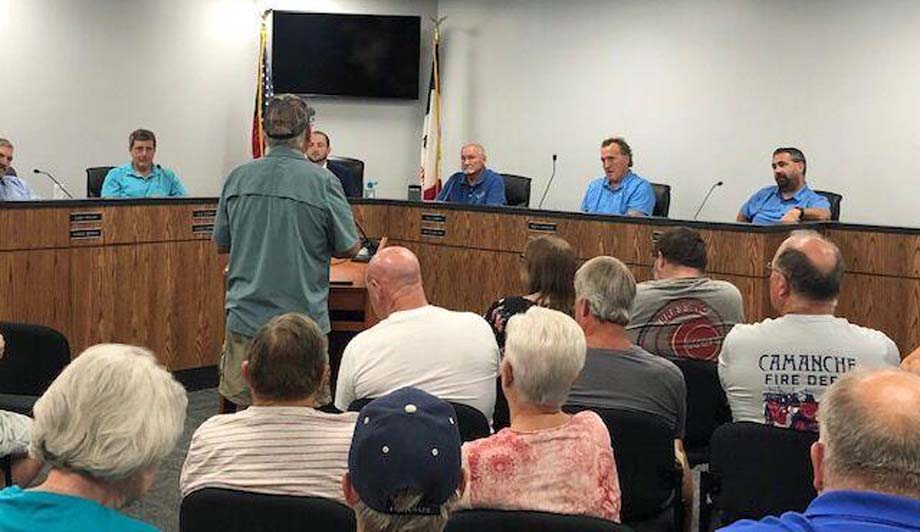
Clinton Iowa USA
Camanche Iowa USA - It was standing room only at Camanche City Hall on Tuesday night as residents
took to the podium to voice opposition to the impact a proposed merging of the Canadian Pacific Railroad (that's
Railway) and Kansas City Southern Railroad (CPKC) could have on Camanche.
About 80 people filled the council chambers, with 20 of them addressing the council to share concerns about public
safety risks, the impact of anticipated crossing closures, declining residential property value, and population
loss.
"Safety is my main concern. This will kill people and will kill small towns," said Dr. John Dixon, a Camanche
resident.
At issue is the proposed CPKC merger being considered, and to be decided by the Surface Transportation Board
(STB).
Local officials say the plan is for trains to carry bituminous oil from Canada to the Gulf of Mexico.
In preparation for a merger, CP representatives have been negotiating with cities located on the route to get them on
board so they won't oppose the merger.
Camanche City Administrator Andrew Kida said cities can use the money as they see fit, but most will use it to make
changes that will pay for measures to facilitate quiet zones.
In a presentation to residents at the start of the public hearing, Kida gave examples of three communities that
negotiated with CP.
He said Muscatine and Bettendorf each negotiated receiving US$3 million, while Davenport will get US$10
million.
Meanwhile, he said, Camanche was offered US$200,000 in exchange for closing two crossings or US$300,000 for closing
three crossings.
Kida said he countered CP's proposal, telling the railroad that Camanche would not oppose the merger if the railroad
pays the city US$2.5 million for quiet zones and quality-of-life costs, and agrees to keep all crossings
open.
CP turned down that offer.
Kida said the amounts CP offered to Camanche are not enough to pay for upgrades that will be needed, such as a
pedestrian bridge, to ensure the safety of the 409 households on the east side of the railroad tracks that would be cut
off from emergency services should a train block all city crossings for an extended length of time.
Kida said that is a possibility, since the length of trains is expected to grow to at least one mile long, which is
greater than the distance between the crossings on each end of town.
Also of concern is the increase in train traffic, which he said could triple on any given day and increase
risk.
Each person who spoke to the council Tuesday night agreed with Kida, stating opposition to the merger, loss of
crossings, the possibility of emergency service availability being cut off by blocked trains, and trains' decibel
levels.
"My concern is emergencies. How to get help to people and how to get people to the help they need," said
resident Alice Srp.
Douglas Murphy of Camanche said the railroad is not concerned with people's lives but with the numbers.
"They're basing all their decisions on money," he said.
Others used their time to urge residents to band together and join other communities to fight the railroad's
plan.
Two Davenport residents spoke of efforts by residents there to stop the merger, with one directing residents to
stopthetrain.com and a 13 Sep 2022 event to fight the merger.
Davenport's former mayor, Bill Gluba, not only urged Camanche residents to join in the fight but to lead
it.
"It's a threat to your people and to your town," he said.
Camanche Fire Chief Dave Schutte said, if the railroad proceeds with its plans, he hopes the city is able to get
assurances from the railroad about how long any stoppages would last, and to have the railroad assume liability if
residents sustain damages.
At the conclusion of the one-hour session, Camanche Mayor Austin Pruett said all of the feedback and any additional
received will be considered as the council formulates a position on the issue.
That is expected to happen at its next meeting, set for 6 Sep 2022, according to the city's website.
Charlene Bielema.
(likely no image with original article)
(usually because it's been seen before)
provisions in Section 29 of the
Canadian Copyright Modernization Act.

